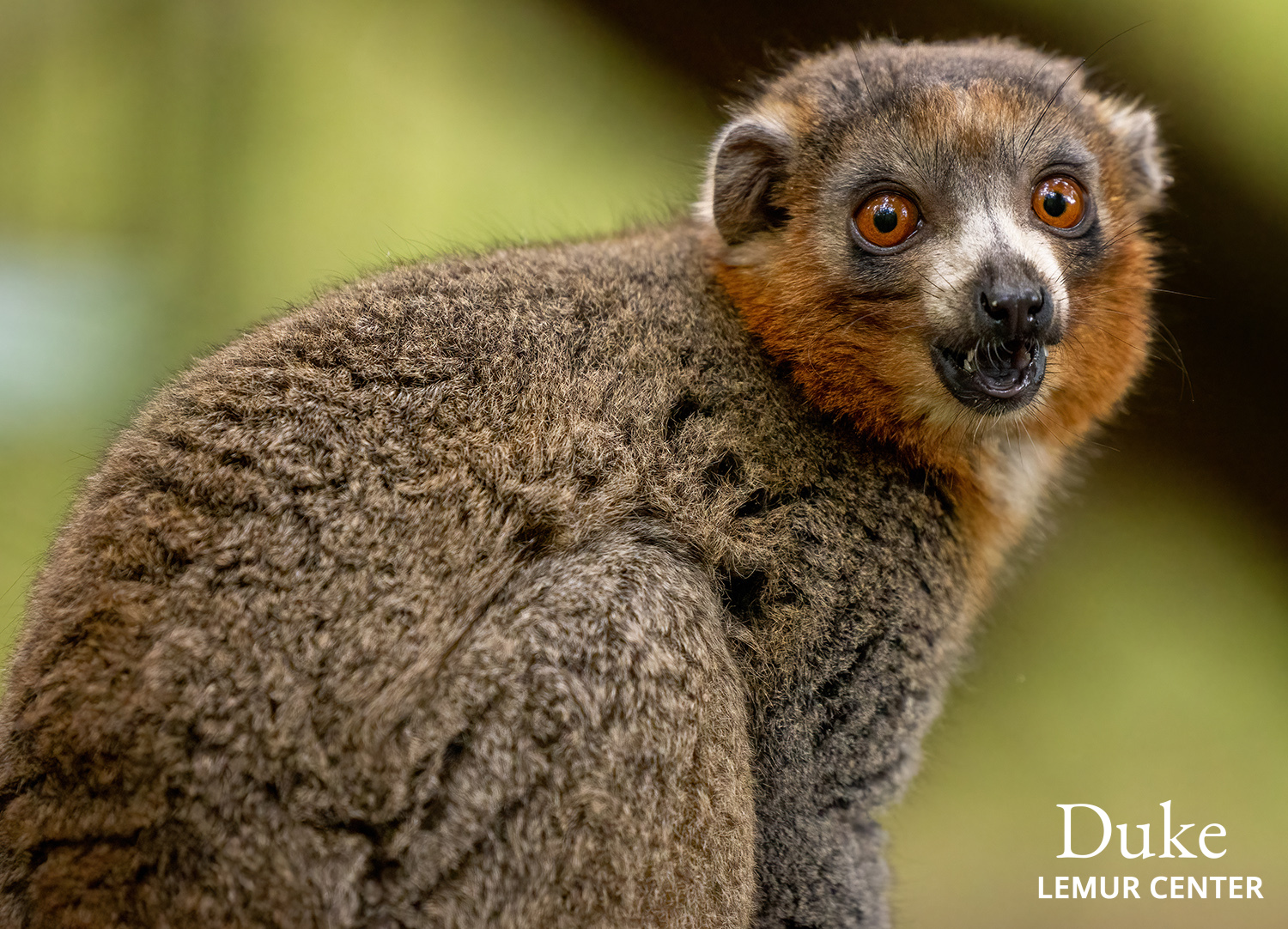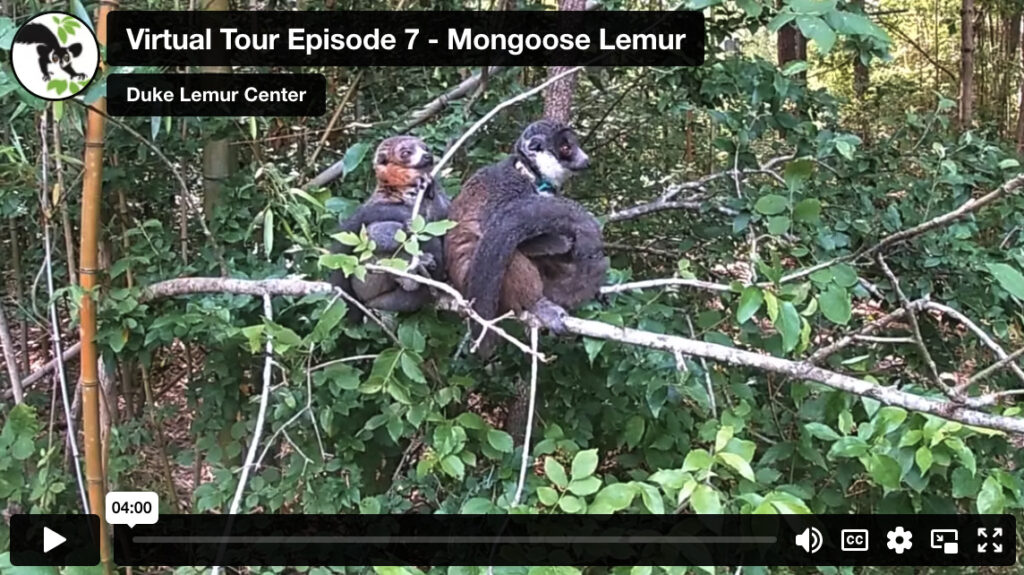Eulemur mongoz
While mongoose lemurs have no relation to the small carnivore that gives them their name, they do share their small body size and gray fur color.
Mongoose lemurs are sexually dichromatic in the coloration of their “beards”: males have reddish-orange fur beneath their chins while females have white fur.
In 2020, the mongoose lemur was classified as critically endangered by the International Union for Conservation of Nature (IUCN). The Duke Lemur Center’s conservation breeding program, in partnership with other AZA-accredited institutions worldwide, is critical to the long-term survival of this highly threatened species.
About Mongoose Lemurs
Mongoose lemurs are featured in episode seven of our FREE virtual tour series! Curious about lemur care at the DLC? Mongoose lemurs Mico and Bonita help answer all the important questions: What do lemurs eat? When do lemurs sleep? How long do lemurs live? They are especially happy to demonstrate the eating part. Feel free to snack along during this video!
Mongoose lemurs are slightly larger than crowned lemurs, another member of the Eulemur genus. Mongoose lemurs are sexually dichromatic in the coloration of their “beards”: males have reddish-orange fur beneath their chins while females have white fur. Males born with white beards that turn reddish-brown when they reach six weeks old.
While mongoose lemurs have no relation to the small carnivore that gives them their name, they do share their small body size and gray fur color.
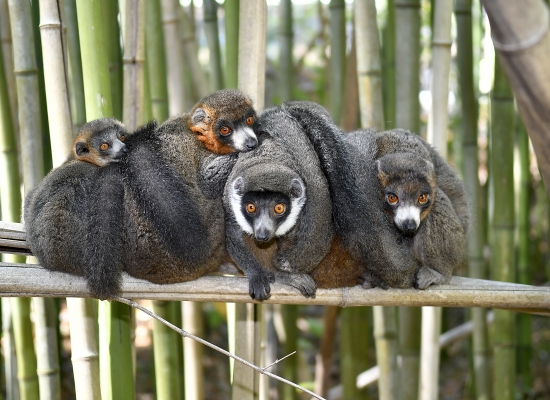
During both the wet and the dry season, fruit appears to dominate the mongoose lemur diet. In the wet season, the animals are also known to feed voraciously on flowers, particularly those from the Kapok tree. In addition, these lemurs are extremely fond of nectar, which may indicate that they are important pollinators of certain species of flowers. During the dry season, the mongoose lemur must turn to both mature and immature leaves for nourishment. In the wild, they have also been observed to feed on the occasional beetle and insect grub.

In the wild, infants are born at the beginning of the wet season in October. Infants cling to their mothers’ bellies for the first three weeks, shifting only to nurse. At approximately five weeks of age, the young lemurs will take their first tentative steps away from their mothers. With this hint of independence, infants begin to taste solid food, sampling bits of whatever the other members of their group are eating. Nursing continues, in a steady decline in importance in the infant’s diet, until the infant is weaned at approximately five or six months of age.
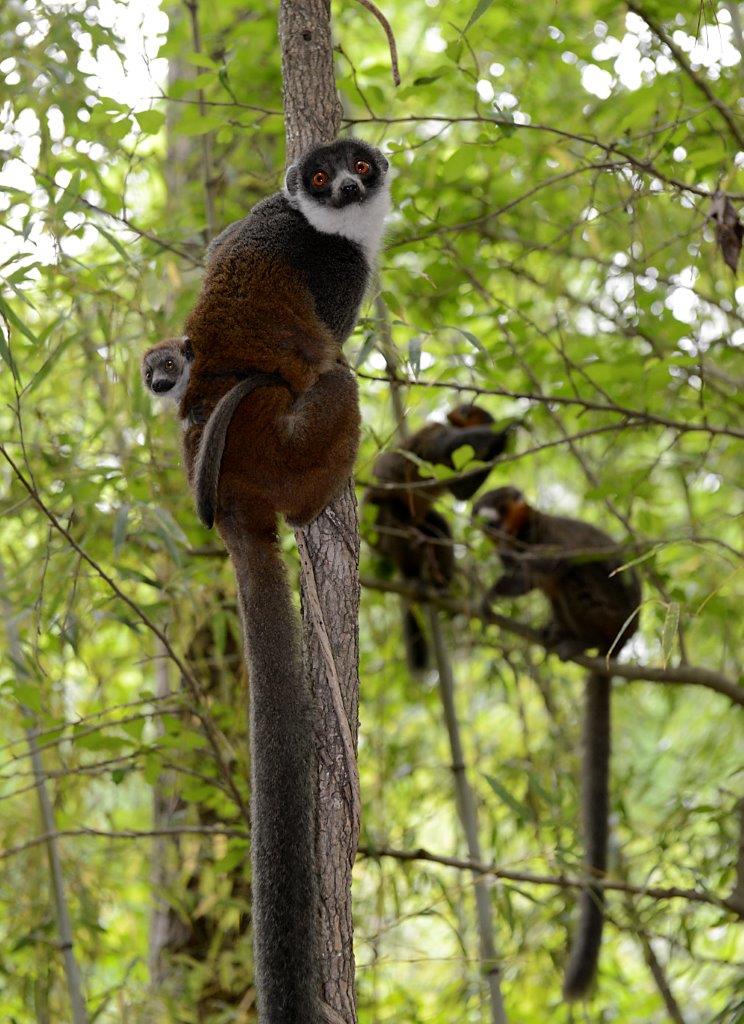
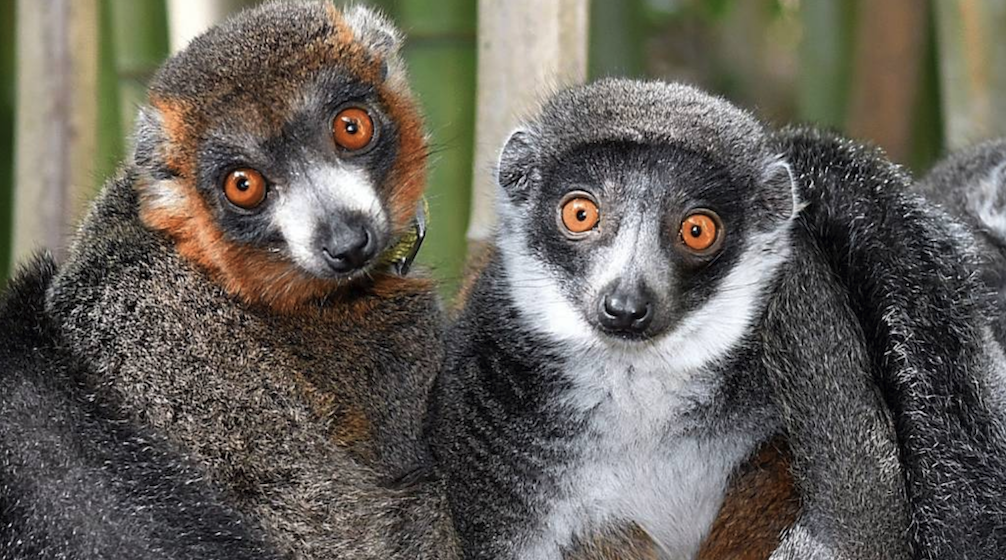
Family groups:
Mongoose lemurs live in small family groups consisting of a monogamous adult pair and one to three of their immature offspring. As is true of most lemur species, females are usually dominant to males, taking preferential access to food and the choice of with whom to mate.
At sexual maturity (2.5-3.5 years old), offspring are encouraged to leave the family group by the parents. This also occurs in human care, or, in rare instances, the offspring might kick a parent of the same sex out of the social group.
Mongoose lemur mates tend to stick together year after year. Monogamy is not common among lemurs and this behavior is being studied in non-invasive research at the Duke Lemur Center.
As the family group travels through the forest, they maintain extremely close contact. Home ranges are small and there is often overlap with the range of another group. Neighboring groups encounter each other rarely, but when they do, the encounters are marked by aggressive vocalizations, scent marking, and physical charges and threats.
Activity:
Mongoose lemurs live in the dry, deciduous forest of northwestern Madagascar, which means they have to be flexible enough to contend with six-month periods of limited to no rainfall. While mongoose lemurs appear to be cathemeral (active at varying times, both day and night) all year 'round, more nighttime activity is common during the dry months (May through November). It is thought that this shift towards nocturnality during the dry, hot season helps the lemurs conserve energy by shifting their activity towards the coolest part of the day. Also, this is the season where there is the least forest cover, so being active at night may help the lemurs avoid detection by predators.
These critically endangered lemurs inhabit dry deciduous forests in a small area of northwestern Madagascar. The species’ natural range is restricted to these forests, but mongoose lemurs have also been introduced to the Comoros Islands where they live in a more humid environment. This is the only species of lemur that is found outside of Madagascar.
The dry deciduous forests of northwestern Madagascar continue to be cleared to create pastureland and produce charcoal. This destruction is the primary threat to the survival of mongoose lemurs, but they are also hunted for food throughout much of their range. Additionally, they are occasionally trapped for the pet trade. Mongoose lemurs occur naturally in only one of Madagascar’s protected areas: the Ankarafantsika Nature Reserve.
Adult size: 3.1-3.5 lbs (1.4-1.6 kg)
Social structure: male-female pairs with offspring
Habitat: dry, deciduous forest in northwest Madagascar; also introduced to the Comoro Islands
Diet: fruit, flowers, leaves, and nectar
Sexual maturity: 2 years
Mating: highly seasonal; infants are born from October-December in Madagascar and from April-May here at the DLC
Gestation: 126 days
Number of young: one per season
IUCN Status: critically endangered
DLC Naming theme: Spanish
Malagasy names: dredrika, gidro

Send a lemur a present: You can send special treats to the DLC’s lemurs, as well as raw materials for us to construct special enrichment activities to keep them happy and healthy. Simply visit our amazon.com wishlist!
Visit the Duke Lemur Center: The DLC is only partially funded by Duke, so we rely heavily on revenue from tours to help pay for lemur care and housing as well as our conservation work in Madagascar. So, something as simple and fun as visiting the Lemur Center can help us help the lemurs!
Don't promote lemurs as pets: In the United States, lemurs are occasionally marketed as pets, and the pet trade can have devastating consequences for both the lemur and its owner. Even if you never own a pet lemur yourself, there are choices you can make to reduce others’ interest in lemurs as pets. Learn more in our article "Lemurs: The Pet to Regret."
Engage in conservation locally: Though it doesn't directly affect lemurs, the DLC also promotes local conservation. We encourage visitors to support local ecosystems and protect local habitats, similar to the way we're helping the local people in Madagascar preserve lemurs' natural habitat. A fun way to do this is to plant a local pollinators garden at your home or school. The DLC itself incorporated a Monarch Waystation into its landscaping for the summer tour path in 2017. You can also stop using dangerous chemicals on your lawn, which might end up in lakes and streams and harm fish, frogs, and other animals.


